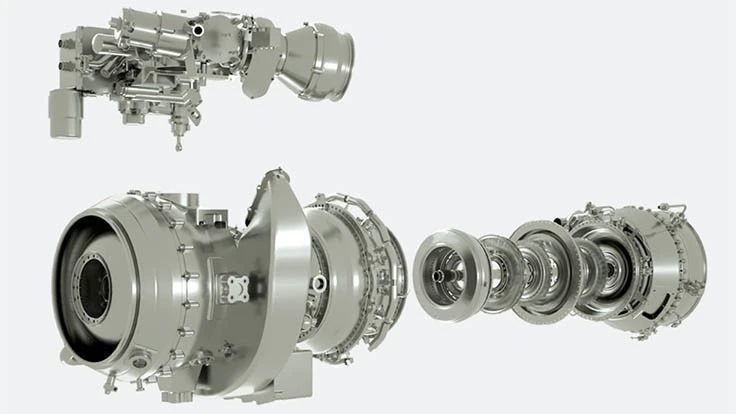
The U.S. Army has selected GE Aviation’s T901-GE-900 engine for the Engineering and Manufacturing Development (EMD) phase of the Improved Turbine Engine Program (ITEP), the U.S. Army’s endeavor to re-engine its Boeing AH-64 Apaches and Sikorsky UH-60 Black Hawks.
“We are honored to be chosen by the Army to continue powering their Black Hawks and Apaches for decades to come,” said Tony Mathis, president and CEO of GE Aviation’s military business. “We’ve invested in the resources and infrastructure to execute immediately, and our team is ready to get to work on delivering the improved capabilities of the T901 to the warfighter.”
GE has powered Black Hawks and Apaches for the past four decades with its T700 engine, racking up more than 100 million flight hours of combat-proven experience. Through continuous upgrades and technology advancements, GE has doubled the power of derivative engines in the T700 family during its lifetime and reduced its cost to the government by 50%.
GE carried over the benefits of the T700 engine’s single-spool core architecture, key to the T901’s low cost, growth, reliability, maintainability, and reduced life-cycle costs.
The modularity of the T901’s single-spool core lets combat units swap out modular parts of the engine in the field and travel with fewer full-sized spare engines, simplifying logistical footprints and supply lines. The modular design also offers growth potential at a lower cost through incremental improvements, an advantage to meet the Army’s future vertical lift (FVL) requirements the U.S. Army is expecting the ITEP engine to meet.
GE has invested $9 billion in maturing technologies applicable to the T901 and more than $300 million to develop and test turboshaft-specific technologies. Additionally, GE has invested more than $10 billion in their supply chain over the past decade, including eight new facilities, 10 plant expansions and 1.5 million square feet of new, advanced manufacturing space in the U.S. to deliver T901 engines to the Army.
GE’s T901 turboshaft design, manufacturing, assembly and testing will be supported in Lynn, Massachusetts; Auburn and Huntsville, Alabama; Norwich, Connecticut; Newark, Delaware; Loves Park, Illinois.; Jacksonville, Florida; Madisonville, Kentucky; Grand Rapids and Muskegon, Michigan; Hooksett, New Hampshire; Asheville, North Carolina; West Chester, Evendale, and Dayton, Ohio; and Rutland, Vermont.
For Massachusetts: The ITEP EMD contract supports more than 100 equivalent fulltime engineers, predominantly located at the GE Aviation facility in Lynn, Massachusetts. Designing, manufacturing, and supporting T700 engines for the Army’s Apache and Black Hawk helicopters has been a significant part of GE Lynn’s business for decades.
For Northern Alabama: By successfully completing the ITEP PDR, GE Aviation proved the benefit of incorporating advanced hot section materials such as ceramic matrix composites (CMCs) in the T901 engine. GE is opening two CMC material production facilities in Huntsville to ensure sufficient production capability for future engines like the T901. GE invested $200 million in the facilities, which will employ up to 300 new workers.
For Southern Alabama: By successfully completing the ITEP PDR, GE Aviation proved the benefits of incorporating advanced manufacturing methods such as additive manufacturing in the T901 engine.
GE is expanding its additive manufacturing production capability at Auburn. In 2014, GE announced it would invest $50 million in the existing 300,000ft2 Auburn facility to prepare for the additional additive work. Upon completion, GE’s investments in Auburn will total more than $125 million since 2011, creating more than 300 new jobs.
Latest from Aerospace Manufacturing and Design
- Guill Labs offer materials and extrusion testing
- High production vertical honing systems
- July Manufacturing Lunch + Learn webinar with OPEN MIND Technologies
- July Manufacturing Lunch + Learn webinar with Techman Robot
- Hexcel and NIAR expand collaboration
- Open aperture XY alignment stage
- Close out July with our Lunch + Learn on medical machining solutions
- Build your Controlled Unclassified Information (CUI) toolkit





